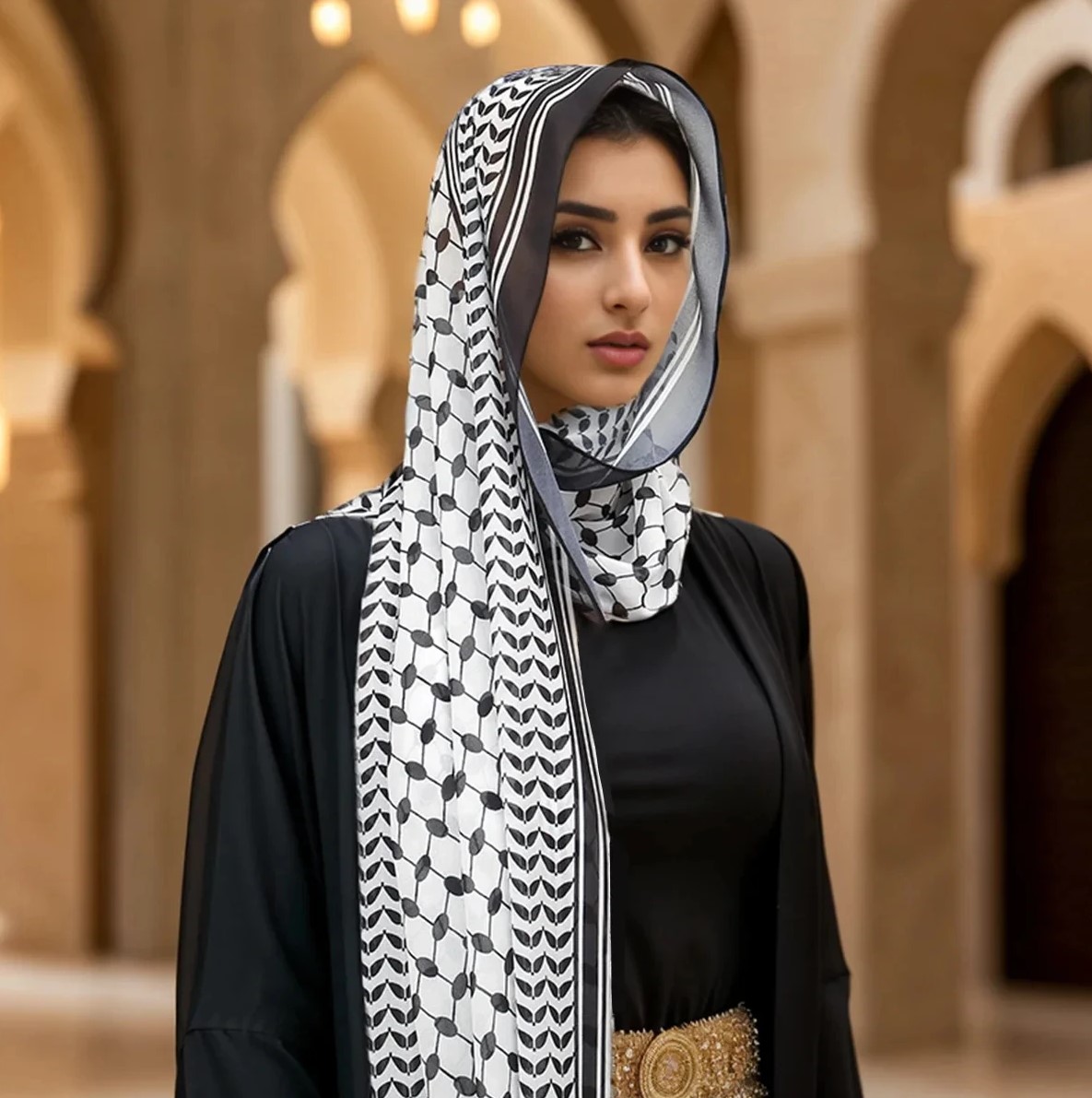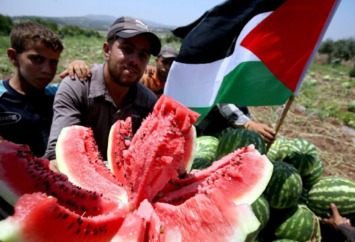In the rich and complex history of Palestinian culture, few symbols stand out as powerfully and universally as the keffiyeh. This traditional headscarf, woven with intricate black and white patterns, has transcended its origins to become a global symbol of Palestinian identity, resistance, and resilience. The keffiyeh is not just a garment—it is a cultural emblem, steeped in history, tradition, and deep meaning.
At Palshekel, one of our core missions is to celebrate and preserve Palestinian heritage, and the keffiyeh is a central part of that. As we face ongoing efforts to erase Palestinian culture and identity, it is more important than ever to spread awareness of our traditions and keep them alive. Through our project, we aim to ensure that Palestinian culture, symbolized in part by the keffiyeh, does not disappear from the world.
What is the Keffiyeh?
The keffiyeh, also known as a shemagh or hattah, is a square scarf typically made of cotton, worn traditionally by Arab men. The scarf is folded into a triangle and worn on the head or around the neck. While the keffiyeh is commonly associated with Palestine, it is a garment worn across the Arab world, and its use dates back centuries.
In Palestine, the keffiyeh is most commonly woven in black and white, but other colors and patterns exist throughout the region. Traditionally, it was used as a practical garment to protect against the harsh sun and desert sand, but over time, it has come to carry deep cultural and political meaning, particularly in the context of Palestinian resistance.
The Symbolism of the Keffiyeh
Every element of the keffiyeh carries symbolic weight. The most common black-and-white pattern, which has become synonymous with Palestinian identity, features a combination of stripes and intricate shapes:
- The Fishnet Pattern: The crisscross pattern of the keffiyeh is often said to represent a fisherman’s net, symbolizing the Palestinian people’s connection to their land and livelihoods, particularly to the Mediterranean Sea and farming traditions. It also symbolizes strength and resilience.
- Olive Leaves: The smaller designs found in some keffiyehs resemble olive leaves, a vital part of Palestinian culture. Olive trees have been cultivated in Palestine for thousands of years and are a symbol of peace and connection to the land. The destruction of olive trees during the conflict is often seen as an attack on Palestinian heritage and identity.
- Stripes and Borders: The borders and stripes of the keffiyeh are said to represent trade routes and ancient roads, reflecting the movement and migration of people over centuries. In a modern context, these lines can symbolize the barriers and borders Palestinians face today under occupation.
History and Political Significance
The keffiyeh became a powerful symbol of Palestinian nationalism and resistance during the Arab Revolt of the 1930s, when Palestinian freedom fighters wore it to shield their identities. Later, it gained prominence in the 1960s and 70s when Yasser Arafat, the leader of the Palestinian Liberation Organization (PLO), adopted the keffiyeh as part of his everyday attire. From that point on, the keffiyeh became a global symbol of Palestinian solidarity, resistance, and the fight for justice.
During the First Intifada (1987–1993), the keffiyeh was worn by young Palestinians as they protested against Israeli occupation. To this day, it is worn by Palestinians and their supporters around the world as a sign of solidarity with the Palestinian cause.
Preserving Palestinian Culture with Palshekel
In today’s world, where Palestine faces continued efforts of displacement, occupation, and cultural erasure, the preservation of Palestinian traditions like the keffiyeh is critical. The keffiyeh is more than just a garment—it is a living symbol of identity, resilience, and resistance. By ensuring that future generations understand its history and meaning, we are protecting a vital piece of Palestinian heritage.
At Palshekel, one of our key goals is to promote and preserve Palestinian culture. We are committed to spreading awareness about the significance of the keffiyeh and other cultural symbols so that they are not lost in the face of attempts at ethnic cleansing and cultural erasure. Our cultural heritage initiatives aim to keep these traditions alive, from supporting local artisans who still weave keffiyehs in Palestine to educating people around the world about their meaning.
Why Cultural Preservation Matters
Cultural preservation is not just about maintaining tradition—it’s about safeguarding identity in the face of oppression. The destruction of Palestinian homes, the displacement of families, and the ongoing conflict are not just attacks on people but also on their culture and history. Efforts to wipe out Palestinian culture are part of a broader campaign of erasure, and it’s vital that we stand against it.
Through education, cultural awareness, and advocacy, we can ensure that symbols like the keffiyeh continue to represent Palestinian identity and resistance. At Palshekel, we believe that the world must never forget the richness of Palestinian culture, and we are committed to doing everything we can to ensure that it is celebrated, preserved, and passed on.
Join Palshekel in the Fight for Cultural Preservation
At Palshekel, we are not just investing in cryptocurrency—we are investing in the future of Palestinian culture. Our mission is to promote education, spread awareness, and support efforts that preserve Palestinian identity in the face of ongoing conflict. By supporting Palshekel, you are not only contributing to humanitarian aid but also helping to keep Palestinian traditions alive.
Through our cultural initiatives, we aim to inspire people around the world to learn about and celebrate Palestinian history, art, and traditions. By doing so, we can ensure that Palestine’s rich heritage is not erased, no matter how hard others may try.
The keffiyeh is more than just a scarf—it’s a symbol of strength, unity, and a deep connection to the land. It is a reminder that Palestine’s identity cannot be erased, and with your help, we can continue to protect and promote this cultural heritage.
Join Palshekel today, and be part of the movement to preserve Palestinian culture and history for generations to come.




